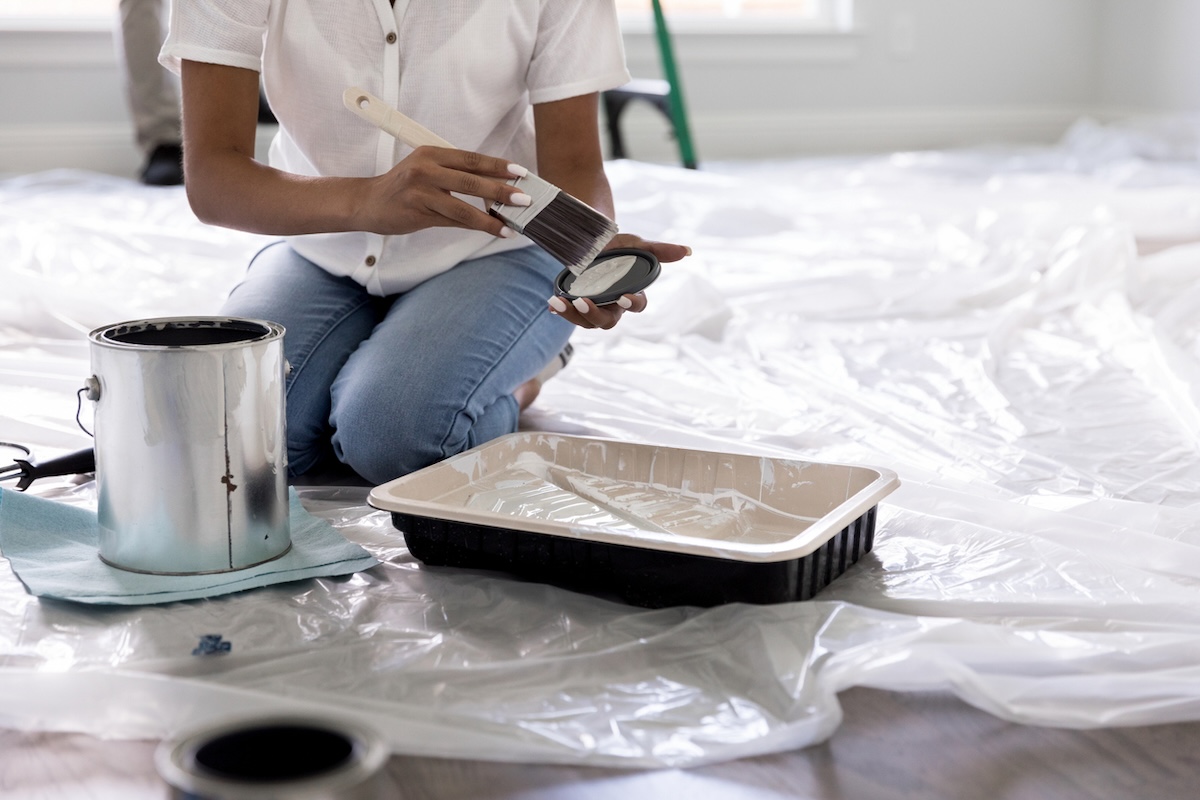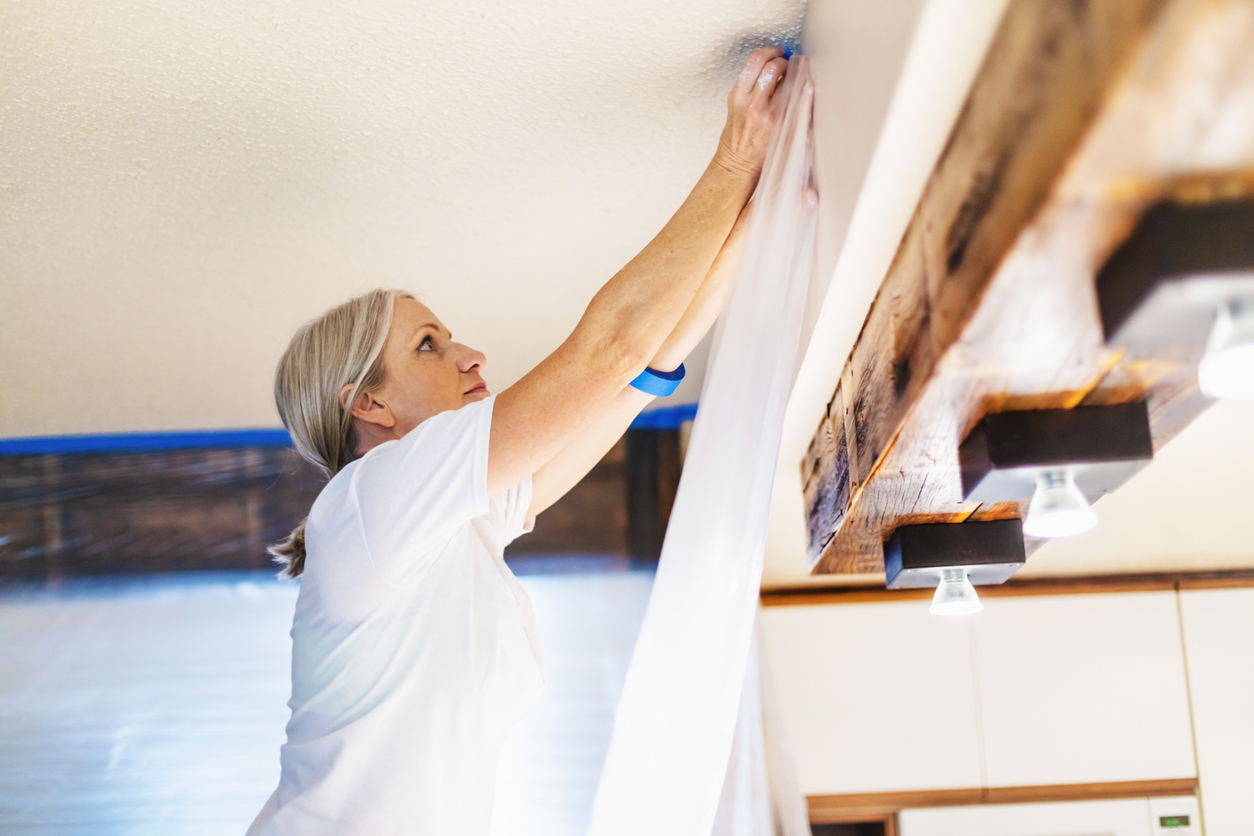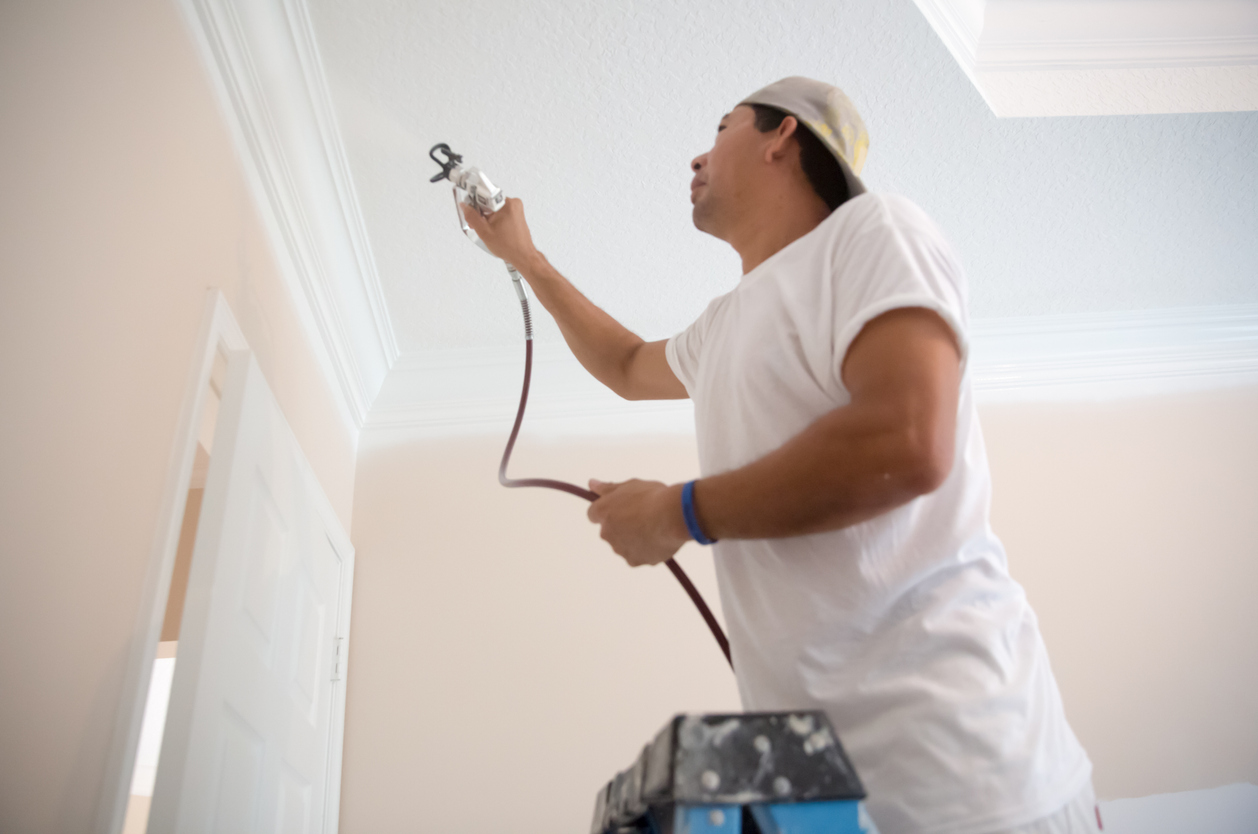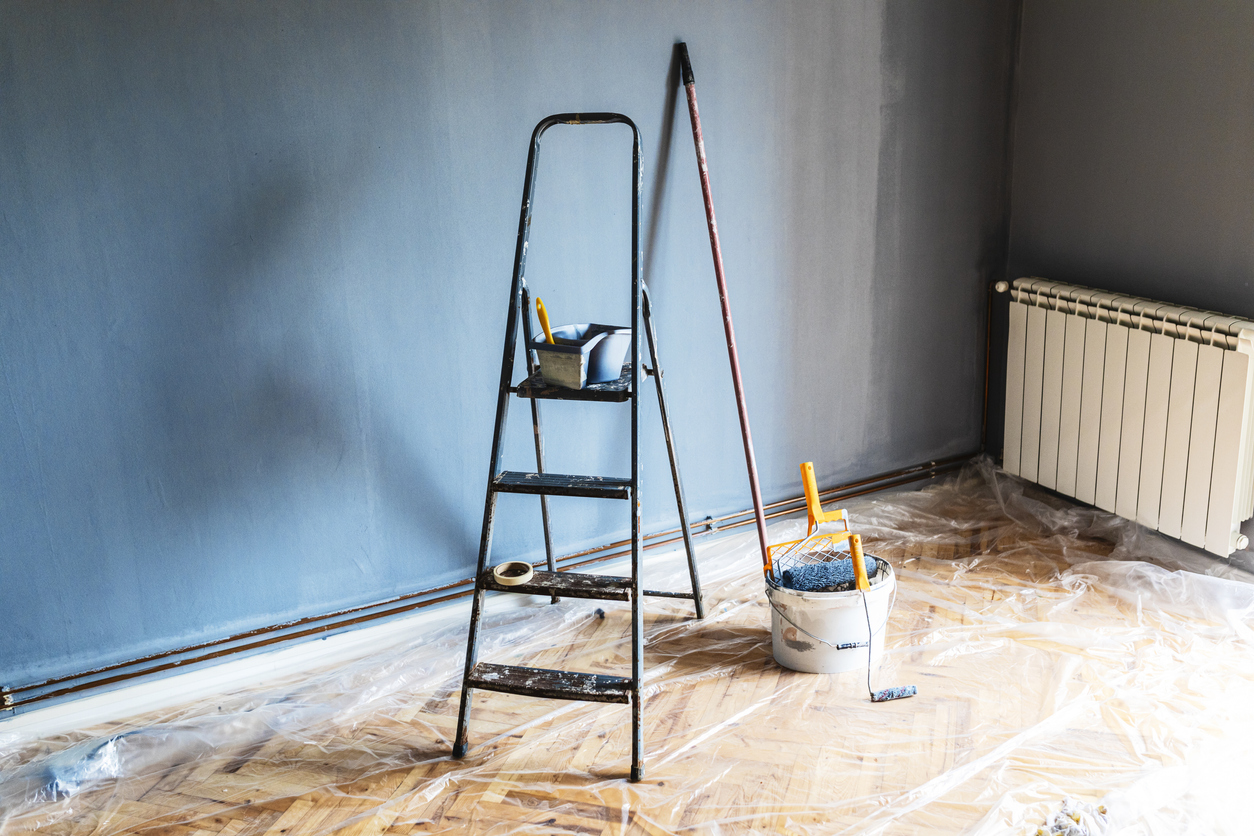

We may earn revenue from the products available on this page and participate in affiliate programs. Learn More ›
Q: I want to paint my bedroom, and I’m between hiring a painter and doing it myself. I don’t want to spend the money on pros, but I don’t have a lot of free time. How long does it take to paint a room on average?
A: In most cases, the average bedroom can be painted in around two days, making it a feasible weekend project. That should give you plenty of time to prepare the room, paint it entirely, and let the paint dry between coats. A professional painter, on the other hand, can likely paint the same room in around a day.
These are general estimates, though—there are many factors that will determine how long it takes to paint a room since no two homes are perfectly alike. To properly answer how long it takes to paint a room on your own, here are some of the most important considerations to account for.
RELATED: The 5 Best Places to Buy Paint
Painting time primarily depends on the size of the room.
The main time factor to consider is the size of the room being painted. It will take much less time for a DIYer or pro to paint a standard bedroom (which usually measures between 132 and 244 square feet) than it would a larger room, such as a living room (180 to 350 square feet). That’s because how long it takes to paint a bedroom is less dependent on cutting in along baseboards and wall trim, requires fewer brushstrokes, and uses less paint than painting a living space or kitchen does.
But it’s not just the square footage of the room that matters: Ceiling height factors into painting time, too. Rooms with taller walls or vaulted ceilings take longer to paint than rooms with standard-height ceilings (9 feet tall on the first floor and 8 feet tall on the second floor of most newer homes).
The room’s shape and layout also affect project length.
Square footage and wall height go hand in hand with a room’s layout, features, and fixtures. High school geometry reminds us that different shapes may have the same area but different perimeters. Rooms with curves, alcoves, and other abnormal shapes may have more wall space, floor trim, and other areas to paint or cut around.
Windows and doors are also a factor. If a room has a wall with multiple individual windows, it will take longer to cut in and paint around them than a wall with a large bank of windows.

Priming walls before painting is essential and takes extra time.
If the walls need to be primed before they’re painted, applying primer and letting it dry is going to add quite a bit of time. Priming is often a necessary step of the painting process that shouldn’t be skipped if you’re looking for the best way to paint walls for a quality finish. Rooms that will need to be primed include those with new drywall construction, walls that require large repairs, or walls already painted bright or intense colors that need to be covered before being repainted.
Consider using primer on walls with a gloss or high-gloss finish; one coat of primer will cover these base layers and give the new paint a clean surface to adhere to. Otherwise, use two or three coats of primer for the best results before painting. Give the primer time to fully dry between applications, a process that takes anywhere from 30 minutes to 4 hours per coat.
RELATED: 8 Times You Should Never Skip Paint Primer
Preparing to paint a room takes time, too.
If you want to learn how to paint walls like a pro, don’t skip the prep work. Beyond priming, prep work includes patching and repairing any damaged walls, cleaning dust and oils off of walls, sanding any dried compound, applying painter’s tape along edges, and covering the floor and any objects in the room with drop cloths.
This is a time-consuming step, but it’s worth the effort. With the room prepped for paint, DIYers can paint faster and worry less about making a mess. Once the walls are repaired and looking their best, the finished paintwork will also look better as a result.
Painting the ceiling and trim may be factored into the overall time.
There are different ways to paint a room. A complete paint job involves painting the walls, doors, ceiling, door and window trim, molding, and baseboards. However, ceilings and trim that are still in good shape might not need to be painted, in which case you might choose to only paint the walls in a room.
That said, there isn’t a direct correlation between the surface types being painted and how long it takes to paint a room. A ceiling features much less surface area than walls beneath, however—since the work is overhead and causes fatigue—it might actually take longer to paint a ceiling than walls. Trim might contain very little surface area in terms of square footage, but it’s easily the most time-consuming aspect of a complete paint job.
RELATED: The 7 Best Paint Edgers, Tested and Reviewed
The quality and type of paint you use factor into time, as well.
Paint time is partially decided in the hardware store, as your chosen paint’s quality and color can affect how long it takes to paint a room. Lower-quality paints don’t cover as well, inevitably leading to more coats of paint being applied and adding to project time. High-quality paint might still require two coats, but the finished product will look better and probably require fewer touch-ups.
Similarly, it’s important to consider the type of paint being used. Latex paint is easy to apply and clean up, and it dries quickly. Oil paint is more difficult to apply and clean up, and takes much longer to dry. Luckily, most interior paints are latex.

Painting with a roller generally takes longer than using a paint sprayer.
Even the tools you use to paint a room have an impact on how long it will take to dry. Most DIYers use brushes and rollers, which are great for minimizing messes, but they’re often slow. Some DIYers and many pros use paint sprayers because they’re the fastest way to paint a room.
There are a few points to consider, though. First, if a DIYer has never used a sprayer before, it will inevitably take them longer to paint a room the first time. But once they get the hang of it, they’ll learn how to paint a room fast. Also, sprayers can be messy and unnecessary for smaller rooms, making tighter spaces better for the brush and roller. Budget is also a factor, as a cheap sprayer is likely more expensive than a quality brush and roller set, and purchasing one of these cheaper models could be a common painting mistake.
Paint drying time is a key consideration.
Paint needs to dry between coats, which will extend how long it takes to paint a room. Most experts recommend letting latex paint dry for 4 hours before applying a second coat. And the higher a paint’s sheen, the longer it will take to dry. As for a coat of oil paint, it can take as long as 24 hours to dry.
The temperature and humidity in the room also impact drying time. Low temperatures and high humidity levels both slow the paint curing process, so paint takes much longer to dry on cold, rainy days. To raise the temperature and lower the humidity in a room, a heater and dehumidifier can help.
RELATED: 10 Things to Know Before Painting Your Walls a Dark Color
Finally, factor in some time for cleanup and touch-ups.
As the final coat of paint starts to cure, you can carefully begin removing painter’s tape and drop cloths. This should be done before the paint has fully cured, as peeling these off of fully cured paint can tear it off the wall, or the tape may shred during removal.
This is also a good time to start touch-ups. Use the brushes to fix any imperfections such as smudges or missed spots before closing up the paint cans, washing the rollers, and putting everything away. Working while the paint is curing will undoubtedly save some time over the course of the project.

Tips on How to Paint a Room
Now that you know everything that goes into how long it takes to paint a room, combine that information with these professional painting tips and tricks for a painting job well done:
- Remove as much furniture and other items from the room as possible before painting. If any objects are too big to remove, try moving them toward the middle of the room and covering them with a drop cloth.
- Run your hand along the surface of your unpainted walls and use a pencil to circle any depressions or bumps that need to be fixed before priming and painting.
- Clean the walls with a damp cloth and mild detergent (dish soap is fine). This will remove dirt, grime, and grease so the paint can properly adhere.
- Use high-quality painter’s tape. Cheap tape may allow paint to bleed through and tear when it’s being removed.
- The best order of painting a room is to paint the ceiling, then the walls, then the trim.
- When removing painter’s tape, be sure to pull it backward at a 45-degree angle to allow it to cut loose from the curing paint as cleanly as possible.
- Even low-VOC paint can be unpleasant to breathe in as it cures. It’s best to give a room a day to cure before sleeping or spending a lot of time in it.
